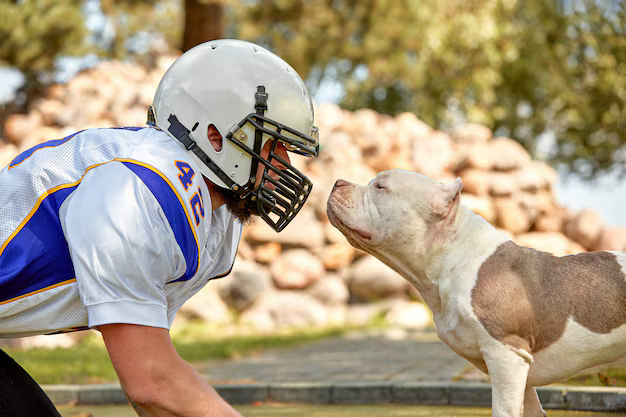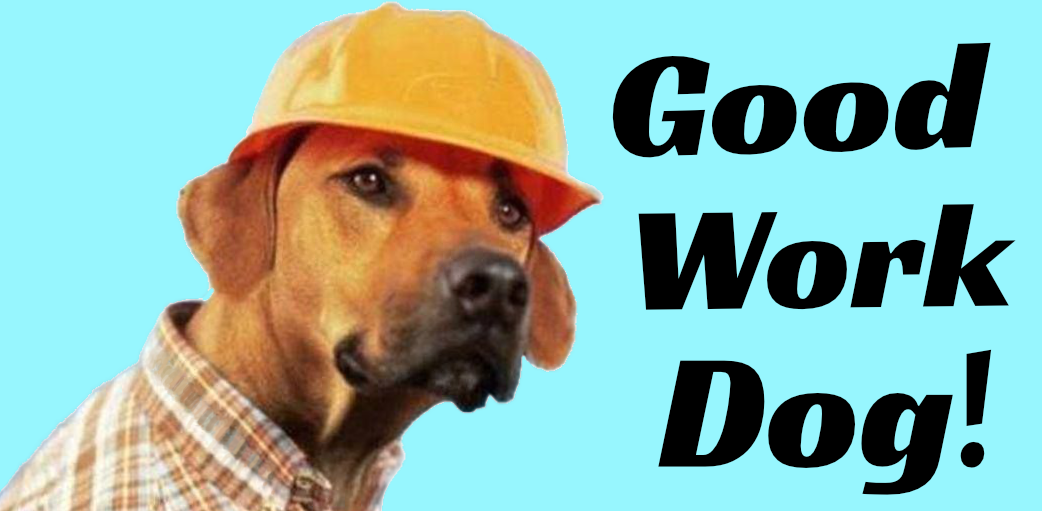When should you use a muzzle?
For too long there has been a stigma around using muzzles. Some people think it makes their dog look scary and aggressive, or they feel that it reflects badly on them as a dog owner, or that dogs shouldn’t have to wear extra gear. But a few locales require muzzles on certain breeds. Many dogs have trouble managing how strongly they grab with their mouths, or making good choices about when to play or react that way–and small conflicts can escalate very quickly. Some dogs have a compulsion to eat things they shouldn’t off the ground, or chew and swallow rocks. It’s not their fault!
When a dog bites a person or another animal, it can have serious consequences for that dog’s quality of life afterward. They may not get to go out in public anymore, they can lose access to family and dog friends, or authorities may order the owner to put the dog down. Pica (compulsive eating of non-food items) can result in serious medical incidents. A muzzle provides a very effective intervention for both issues that allows the dog to keep a good quality of life. It is a form of management that makes biting or eating no longer an option. It does not hurt the dog, and it is fairly easy to use positive reinforcement training to help the dog feel fine about putting it on. It allows your dog to play with friends and visit family. Good Work Dog encourages you to consider using a muzzle to keep your dog safe, social, and active!
Which muzzle should you choose?
You might select one design to prevent bites versus another to prevent grazing off the ground. For example a mesh cloth one can prevent unwanted eating, but can easily be chewed up and bitten through. One with wide spaced rigid bars may prevent most bites, and be hard to gnaw apart, but the dog could still lick or nibble things they find. Either way, the muzzle should have enough space around the mouth for water drinking and open-mouthed panting. A muzzle that keeps the mouth closed will prevent these actions that are critical for heat management and well-being. Ideally the muzzle should also have just enough of an opening in front so you can feed treats for training.
While you can find muzzles like the Baskerville on the shelf at your local pet store, they do not fit all dogs equally well. Dogs have a very wide range of nose length, mouth width, and head shapes. When possible, get one that is custom made for your individual dog’s measurements. This provides the most comfort and the least risk of failure. Some custom brands include The Muzzle Movement, Big Snoof Dog Gear, LiMuzz, Happy Muzzle Co, and Truffle Muzzles. Many custom muzzles are made of a strap material called Biothane, which is easy to work with as a craft material, waterproof, rugged, and it comes in attractive colors. However it is flexible and a dedicated dog can chew through it. There are also custom muzzles made with sheets of clear vinyl; their chew resistance depends on the thickness of the material, and they don’t stay clean-looking for long.
There is no one best design or material, so consider exactly what purpose you need the muzzle for, and which one will fit your dog’s face best, and whether it has an attractive color or style. Wait, does the cosmetic appearance matter? Yes! If you don’t like how it looks, you probably won’t end up using it. Of course no muzzle is as good-looking as your dog’s cute face, but a nice friendly color can make the difference in actually letting your dog keep the quality of life they deserve.

